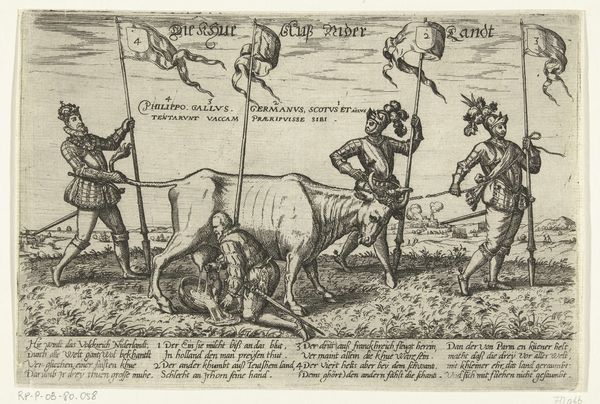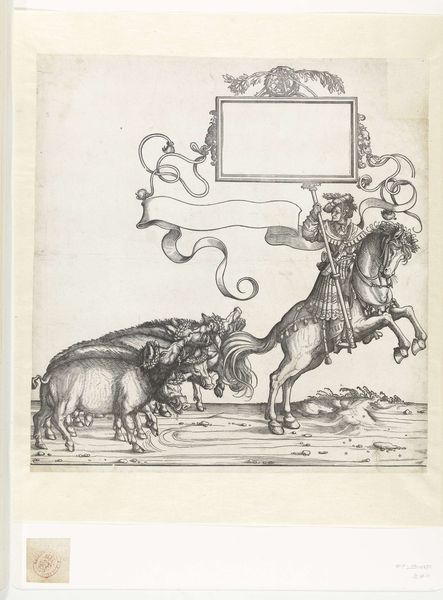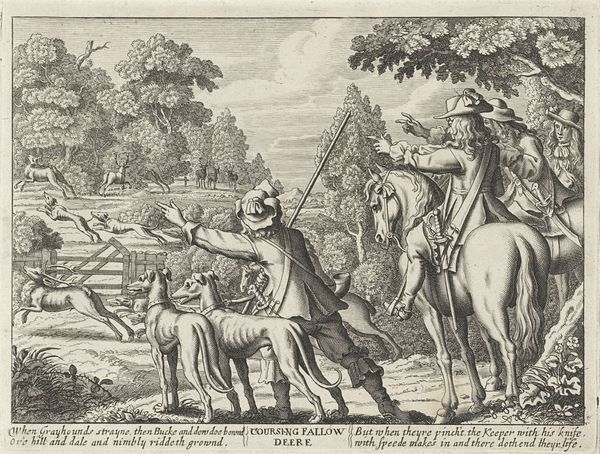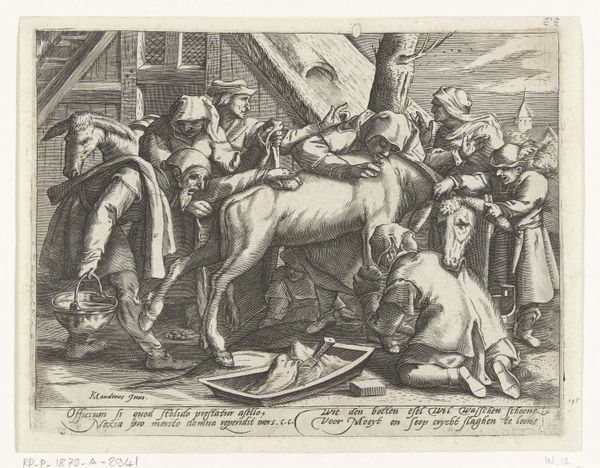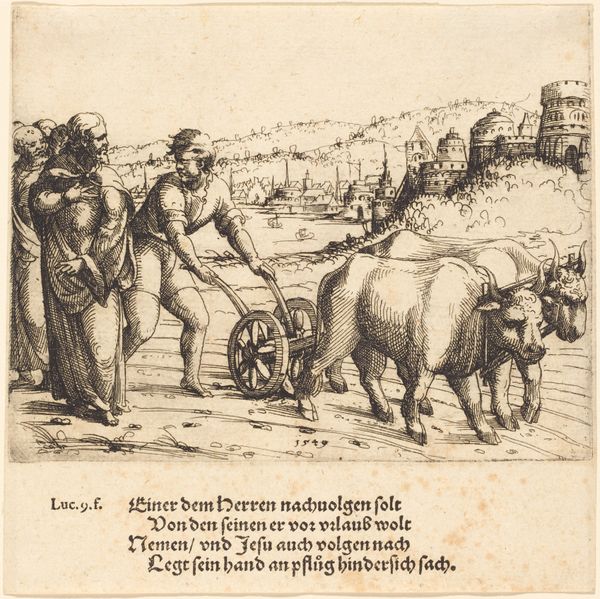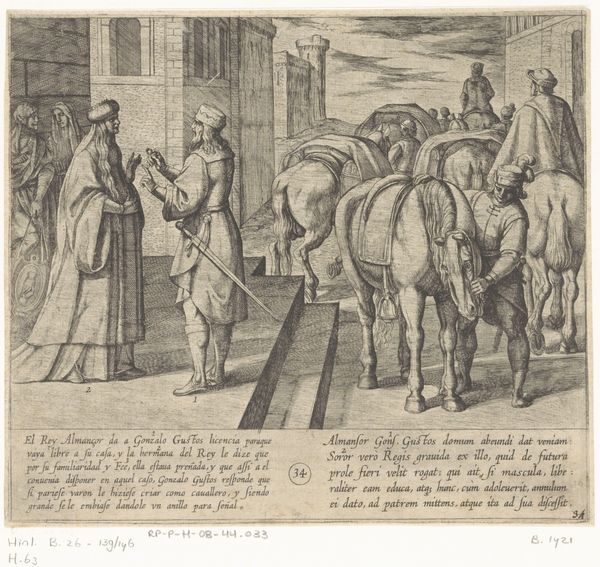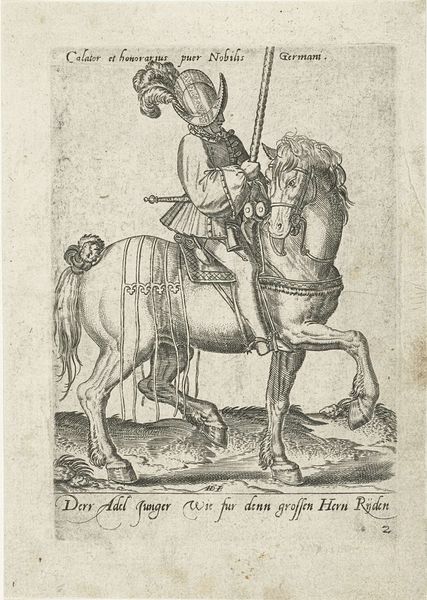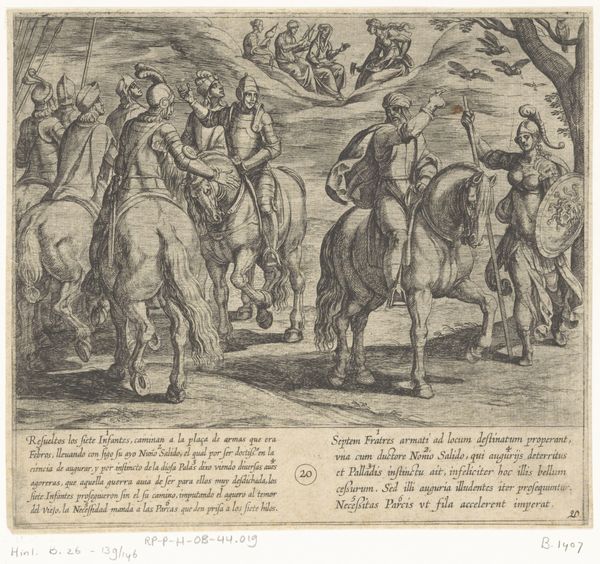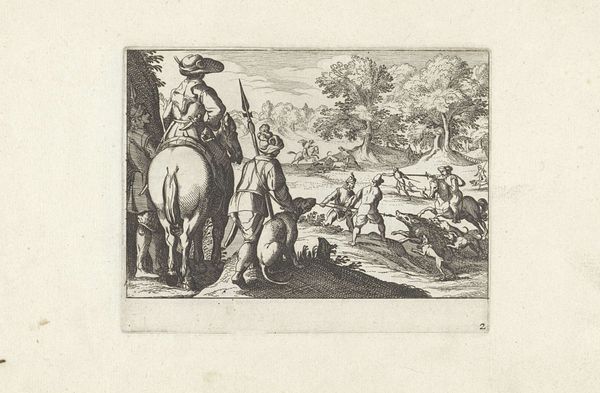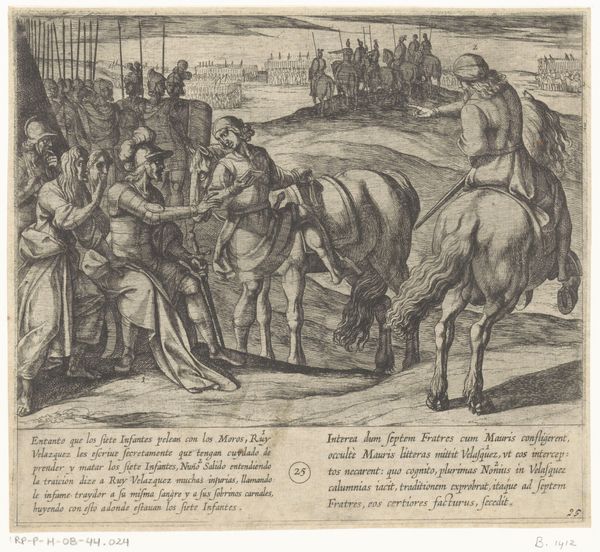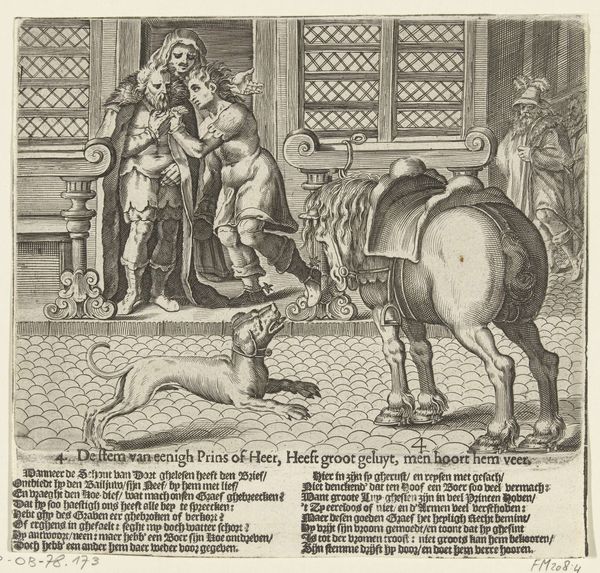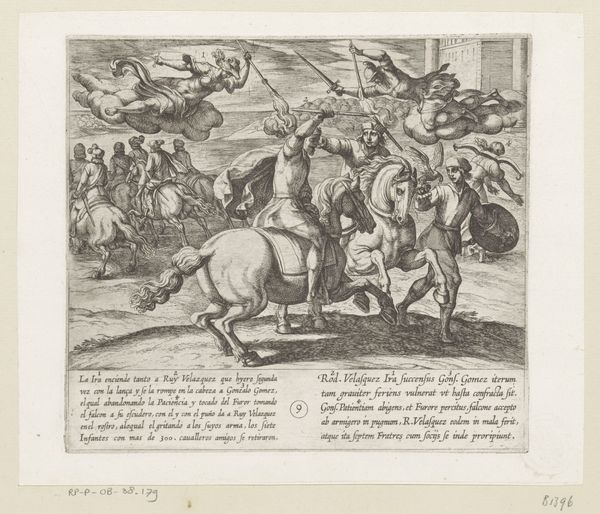
print, engraving
#
narrative-art
#
baroque
#
dutch-golden-age
# print
#
old engraving style
#
traditional media
#
figuration
#
line
#
genre-painting
#
history-painting
#
engraving
#
realism
Dimensions: height 179 mm, width 189 mm
Copyright: Rijks Museum: Open Domain
Curator: Here we have a 1613 engraving by Bartholomeus Willemsz. Dolendo, held at the Rijksmuseum, titled "De baljuw voert de koe van de boer weg," which translates to "The bailiff takes the farmer's cow away." Editor: My initial impression is one of theatrical tension, perhaps with a touch of dark humor. The exaggerated poses and the somewhat crude rendering of the figures create a strong, immediate visual impact. It looks as if the artist wants to provoke outrage toward the man seizing the cow! Curator: Indeed. The print showcases a specific social dynamic and speaks volumes about power structures in that era. The scene portrays a bailiff seizing a farmer's cow, likely due to unpaid dues, shedding light on the harsh realities of agrarian life under the Dutch Golden Age. The artist captured here a genre scene infused with a narrative element, rooted in the history painting style so favored then. Editor: Looking at the composition, the artist seems particularly interested in contrasting the figures. Notice the opulent garb of the bailiff, with its plumage and fancy trimming. Observe how that contrasts with the desperate farmer pleading with his hands, how even the very bovine becomes an emblem for this poor treatment! Curator: The visual emphasis underscores the social hierarchy inherent in the event, doesn't it? We are seeing the mechanics of injustice and maybe a glimpse into class relations during the Dutch Golden Age. The cow itself isn’t just livestock; it represents the farmer’s livelihood, brutally stripped away. Editor: From a formal perspective, the artist’s choice of engraving lends itself well to conveying this dramatic tension. The stark contrast between light and shadow amplifies the emotional intensity of the scene, really forcing the viewers to respond to what they witness. The formal choices highlight those feelings very directly. Curator: Quite right. I would argue the artwork transcends its immediate subject matter to become a commentary on broader social inequalities of the era. Dolendo compels his contemporary audiences – and indeed us – to consider the ethics of power and the plight of the common man, themes that are of continued importance today. Editor: Absolutely. What appeared at first to be simply a genre scene reveals itself to be a potent emblem for historical social injustices. The formal elements support a robust vision. Curator: I find myself pondering about the complex narrative conveyed in the detailed engraving—truly offering both historical and artful substance for reflection.
Comments
No comments
Be the first to comment and join the conversation on the ultimate creative platform.
